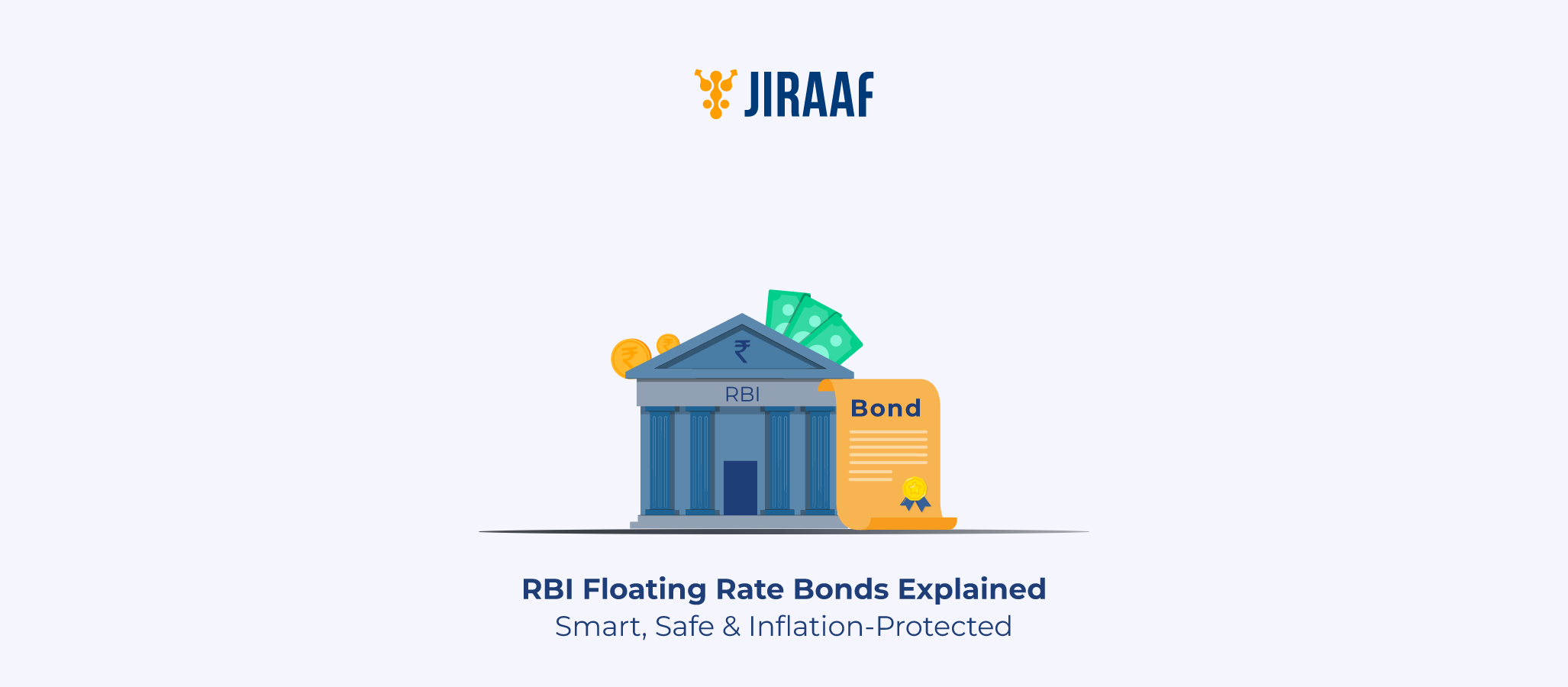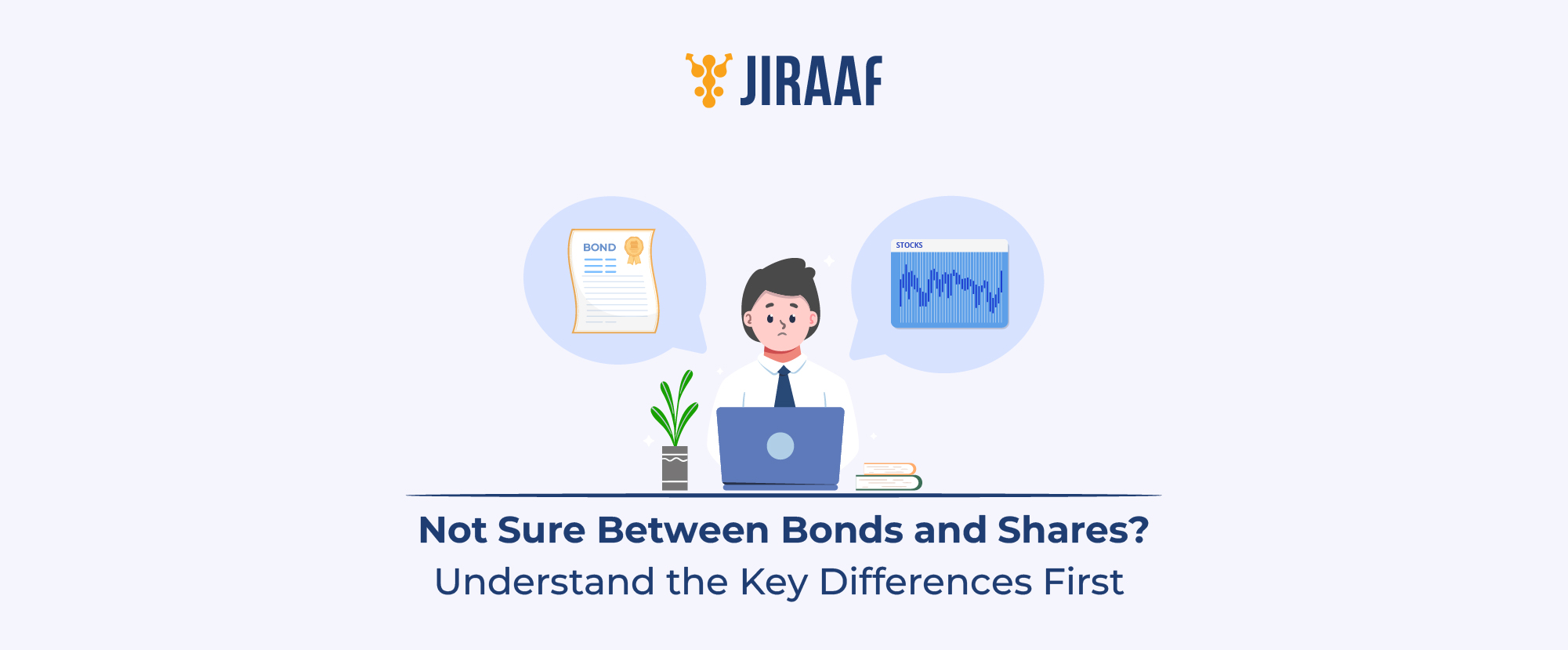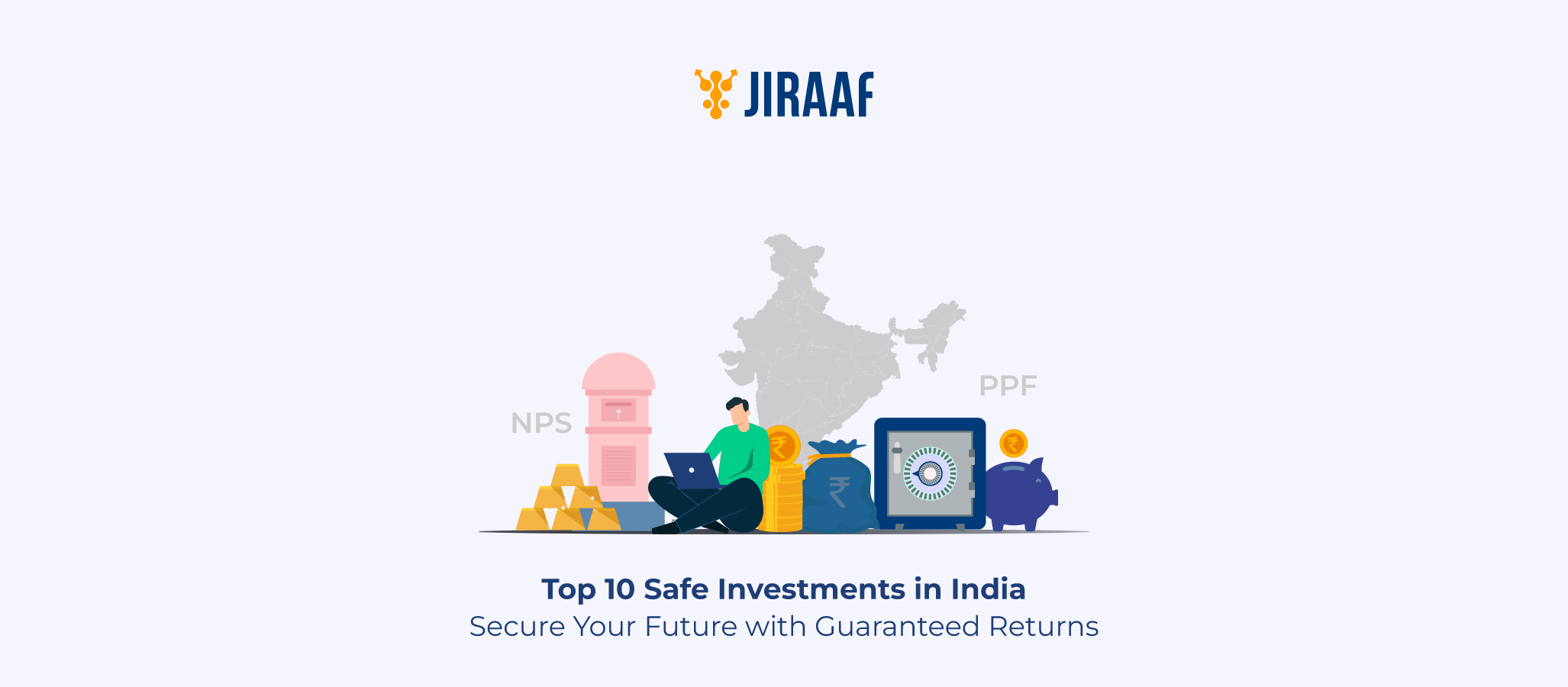Balancing any investment’s safety, tenure, returns and risk is no easy feat. But if those bonds are backed by the government and come from the RBI, they strike that perfect balance.
One such instrument gaining attention is the RBI Floating Rate Savings Bonds. They provide investors a unique investment opportunity that combines sovereign security with a variable interest structure.
Launched as a successor to the 7.75% taxable savings bonds, the RBI Floating Rate Bonds are designed to provide returns that move in tandem with market interest rates—specifically benchmarked to the National Savings Certificate (NSC) interest rate, so investors like you can take advantage of a floating interest payout that is reset periodically.
So whether you fall into the category of a risk-averse saver, a retiree looking for consistent income, or someone building a diversified fixed-income portfolio, understanding the mechanics of these bonds is crucial. This blog discusses their features, benefits, tax implications, interest rate structure, and how you can invest in them.
What are RBI Floating Rate Savings Bonds?
RBI Floating Rate Savings Bonds are government-backed debt instruments issued by the Reserve Bank of India (RBI) to retail investors. These bonds provide a safe and secure investment avenue. Launched in July 2020, they replaced the 7.75% taxable savings bonds, offering a market-linked alternative with a starting rate of 7.15%.
These bonds get their name (floating rate), because their interest rates are not fixed for the entire tenure; instead, the rates are benchmarked to the prevailing National Savings Certificate (NSC) interest rate plus a spread. This ensures that returns are adjusted periodically, aligning them with the broader interest-rate environment in the country.
Investors who are more risk-averse especially like these bonds since they provide better returns than traditional fixed deposits (FDs), without exposure to market volatility.
Key Features of RBI Floating Rate Savings Bonds
- Interest Rate: Initially set at 7.15% per annum (as of the first reset), the rate is reset every six months. It is linked to the prevailing NSC rate plus 0.35% (35 basis points).
- Tenure: The maturity period is 7 years from the date of issuance. Premature withdrawal is allowed only for senior citizens under specific conditions.
- Minimum Investment: The minimum investment is Rs. 1,000. There is no maximum limit, making it suitable for both small and large investors.
- Mode of Issuance: The bonds are issued in dematerialized (demat) form and credited to the Bond Ledger Account (BLA). No physical certificates are provided.
- Interest Payment Frequency: Interest is paid every six months directly into the investor’s bank account, on January 1 and July 1.
- Eligibility: Available to Indian residents, including individuals and Hindu Undivided Families (HUFs). NRIs are not eligible.
- Transferability: These bonds are non-transferable and cannot be traded in the secondary market.
- Beneficiary Nomination: Investors can nominate one or more people as beneficiaries.
How Do Floating Interest Rates Work in RBI Bonds?
Floating rate bonds differ from fixed-rate instruments in how they calculate returns. In the case of RBI Floating Rate Savings Bonds, the rate resets every six months based on the latest interest rate for NSC, plus a fixed spread of 0.35% (35 basis points).
For example, if the NSC rate is 6.8%, the bond rate will be 6.8% + 0.35% = 7.15%. If NSC rates go up in the next review, so will the bond rate, and if the former goes down, so does the latter. Investors benefit from a rising rare environment through this dynamic rate mechanism while maintaining safety and stability.
The reset mechanism adds a layer of market sensitivity, making them more aligned with the current macroeconomic conditions, which is especially beneficial during inflationary periods.
How to Invest in RBI Floating Rate Bonds
Investing in these bonds is relatively straightforward.
- Eligible Investors: Only resident individuals and HUFs can invest. NRIs are excluded.
- Where to Buy: The bonds can be purchased through nationalized banks (like SBI, Bank of India), private sector banks, and Stock Holding Corporation of India Limited (SHCIL).
- Mode of Payment: Investors can pay using cash (up to Rs. 20,000), cheques, or online transfer (NEFT/RTGS).
- Application Form: You will need to fill in a prescribed form along with Know Your Customer (KYC) documents, such as your PAN card and address proof.
- Bond Ledger Account (BLA): Upon successful application, a BLA is created, and the bonds are credited to this account.
- Interest Payments: The interest is automatically credited every six months.
This digital process helps with increased efficiency and reduced paperwork. However, an offline option exists for those who prefer it.
Tax Implications on RBI Bonds
- Taxable Interest: Any interest earned on the RBI floating rate bonds is fully taxable based on the investor’s applicable income tax slab.
- No TDS: Although the interest is taxable, no Tax Deducted at Source (TDS) is applied by RBI. Investors are required to declare and pay the tax themselves.
- No Capital Gains Tax: Since the bonds are not tradable and redemption happens at face value, there are no capital gains implications.
For investors in the higher tax bracket, this may affect post-tax returns. It’s advisable to calculate the effective yield based on your slab to determine the real benefit.
Should You Invest in RBI Floating Rate Savings Bonds?
RBI Floating Rate Bonds are ideal for
- Risk-Averse Investors: They offer government-backed safety, making them virtually risk-free.
- Those Seeking Better than FD Returns: The floating rate structure generally ensures better returns than many fixed deposits.
- Senior Citizens: While NRIs cannot invest, Indian senior citizens can also enjoy limited premature withdrawal options.
- Long-Term Investors: The 7-year lock-in period suits those who don’t need immediate liquidity.
However, investors should also consider the taxation aspect and the lack of tradability that these bonds carry along with their benefits.
Conclusion
The RBI Floating Rate Savings Bonds represent a prudent investment choice for individuals seeking capital protection, predictable income, and exposure to interest rates that adjust with market dynamics. Backed by the sovereign guarantee of the Government of India, these bonds offer a compelling alternative to traditional fixed deposits, especially in an environment where interest rates are expected to rise.
With a 7-year lock-in, periodic interest payouts, and a floating rate mechanism pegged to the NSC, they are ideal for long-term investors who prefer safety and steady returns over high-risk market-linked instruments. While not suitable for those looking for short-term liquidity or capital appreciation, these bonds fulfill the critical role of stability in a diversified investment portfolio.
Moreover, for investors in higher tax brackets or those with large idle savings, RBI Floating Rate Bonds can act as a tax-efficient and dependable source of income, especially when used alongside other debt and equity instruments.
Before investing, it’s important to evaluate your financial goals, income needs, and risk tolerance. But for those prioritizing trust, transparency, and consistent income from a government-backed source, RBI Floating Rate Savings Bonds are a strong contender in the fixed-income landscape.









